|
|
|

|
|||||

|
|
Note: The following is an excerpt from this week’s Earnings Trends report. You can access the full report that contains detailed historical actual and estimates for the current and following periods, please click here>>>
Here are the key points:
The earnings focus lately has been on the Retail sector, with Target TGT becoming the latest big-box retailer to come out with results, which follows results from Walmart WMT, TJX Companies TJX, and others.
Target found a way to come up short of even the materially lowered estimates, which has become almost a recurring theme for them in the post-COVID period. They have been steadily losing ground, with Walmart and Amazon making inroads into its market share.
Walmart, on the other hand, can’t seem to do anything wrong, with its growing digital business not only providing an efficient channel to monetize its essentials-centric merchandise and attract an ever-growing share of the high-income households but also opening up growth opportunities in high-margin activities like advertising, third-party marketplace, and even data.
Part of Target’s problems is a result of consumer spending trends that have shifted away from the company’s discretionary merchandise. It has an essentials business like groceries as well, but that business is far smaller than Walmart’s. While roughly 60% of Walmart’s revenues comes from its essentials merchandise, the ratio for Target is roughly 20%.
While there is no question that the operating environment for vendors of discretionary-type merchandise remains difficult, Target’s persistent run of weak quarterly results likely also reflects company-specific execution issues. After all, rivals like TJX TJX are doing a lot better with comparable merchandise, and even Walmart is able to show better results in its general merchandise business than Target.
The chart below showing the one-year performance of Target relative to Walmart, TJX, and the S&P 500 index shows how the market has reacted to the company’s run of weak results.
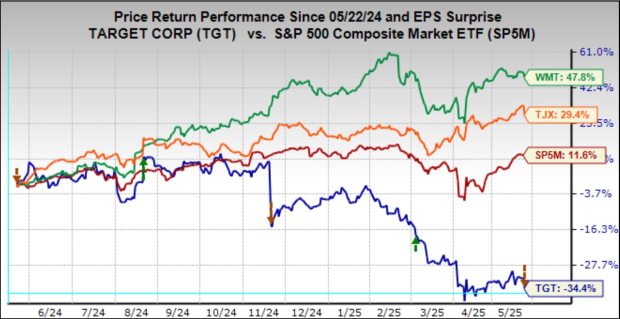
The start of Q2 coincided with heightened tariff uncertainty following the punitive April 2nd tariff announcements. While the onset of the announced levies was eventually delayed for three months, the issue has understandably weighed heavily on estimates for the current and coming quarters.
The expectation at present is for Q2 earnings for the S&P 500 index to increase by +5.5% from the same period last year on +3.8% higher revenues. The chart below shows how Q2 earnings growth expectations have evolved since the start of the year.
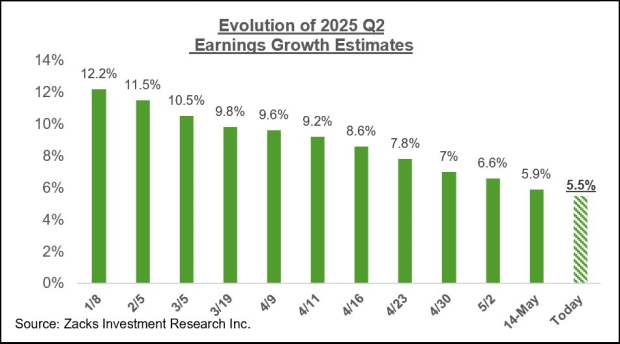
While it is not unusual for estimates to be adjusted lower, the magnitude and breadth of Q2 estimate cuts are greater than we have seen in the comparable periods of other recent quarters.
Since the start of the quarter, estimates have come down for 15 of the 16 Zacks sectors, with the biggest declines for the Transportation, Autos, Energy, Construction, and Basic Materials sectors. The only sector experiencing favorable revisions in this period is Aerospace.
Estimates for the two largest earnings contributors to the index – Tech & Finance – have also declined since the quarter began.
Tech sector earnings are expected to be up +12.1% in Q2 on +9.8% higher revenues. While these earnings growth expectations are materially below where they stood at the start of April, the revisions trend appears to have notably stabilized lately, as we have been flagging in recent weeks. You can see this in the sector’s revisions trend in the chart below.
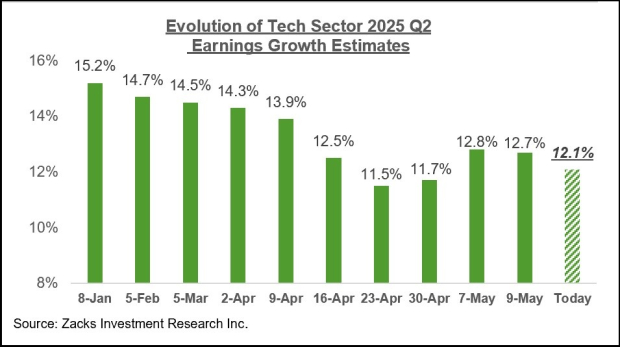
This stabilizing turn in the Tech sector’s revisions trend can be seen in expectations for full-year 2025 as well, as the chart below shows.
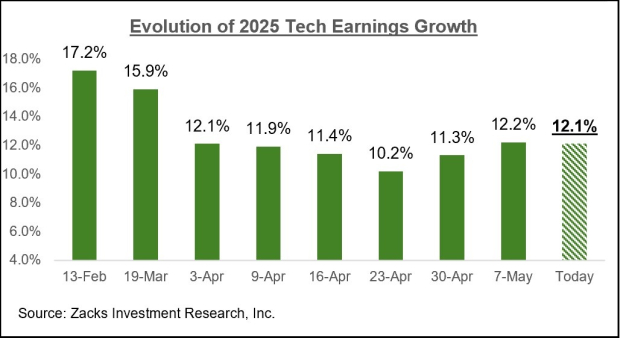
The above two charts show that estimates for the Tech sector have stabilized and are no longer under the type of downward pressure that we were experiencing earlier. The Tech sector is much more than just any another sector, as it alone accounts for almost a third of all S&P 500 earnings.
The chart below shows expectations for 2025 Q1 in terms of what was achieved in the preceding four periods and what is currently expected for the next three quarters.
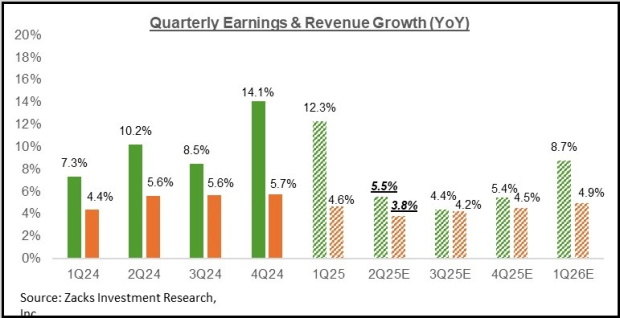
The chart below shows the overall earnings picture for the S&P 500 index on an annual basis.
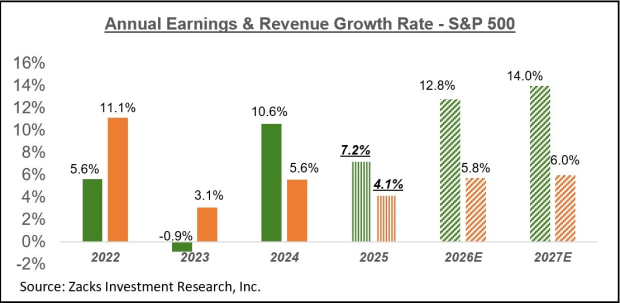
While estimates for this year have been under pressure lately, there haven’t been a lot of changes to estimates for the next two years at this stage.
Stocks have recouped their tariff-centric losses, although the issue has only been deferred for now. While some of the more dire economic projections have eased lately, there is still plenty of macro uncertainty that will likely continue to weigh on earnings estimates in the days ahead, particularly as we get visibility on the tariffs question.
Want the latest recommendations from Zacks Investment Research? Today, you can download 7 Best Stocks for the Next 30 Days. Click to get this free report
This article originally published on Zacks Investment Research (zacks.com).
| 10 min | |
| 11 min | |
| 2 hours | |
| 5 hours | |
| 9 hours | |
| Dec-17 | |
| Dec-17 | |
| Dec-17 | |
| Dec-17 | |
| Dec-17 | |
| Dec-17 | |
| Dec-17 | |
| Dec-17 | |
| Dec-16 | |
| Dec-16 |
Join thousands of traders who make more informed decisions with our premium features. Real-time quotes, advanced visualizations, backtesting, and much more.
Learn more about FINVIZ*Elite